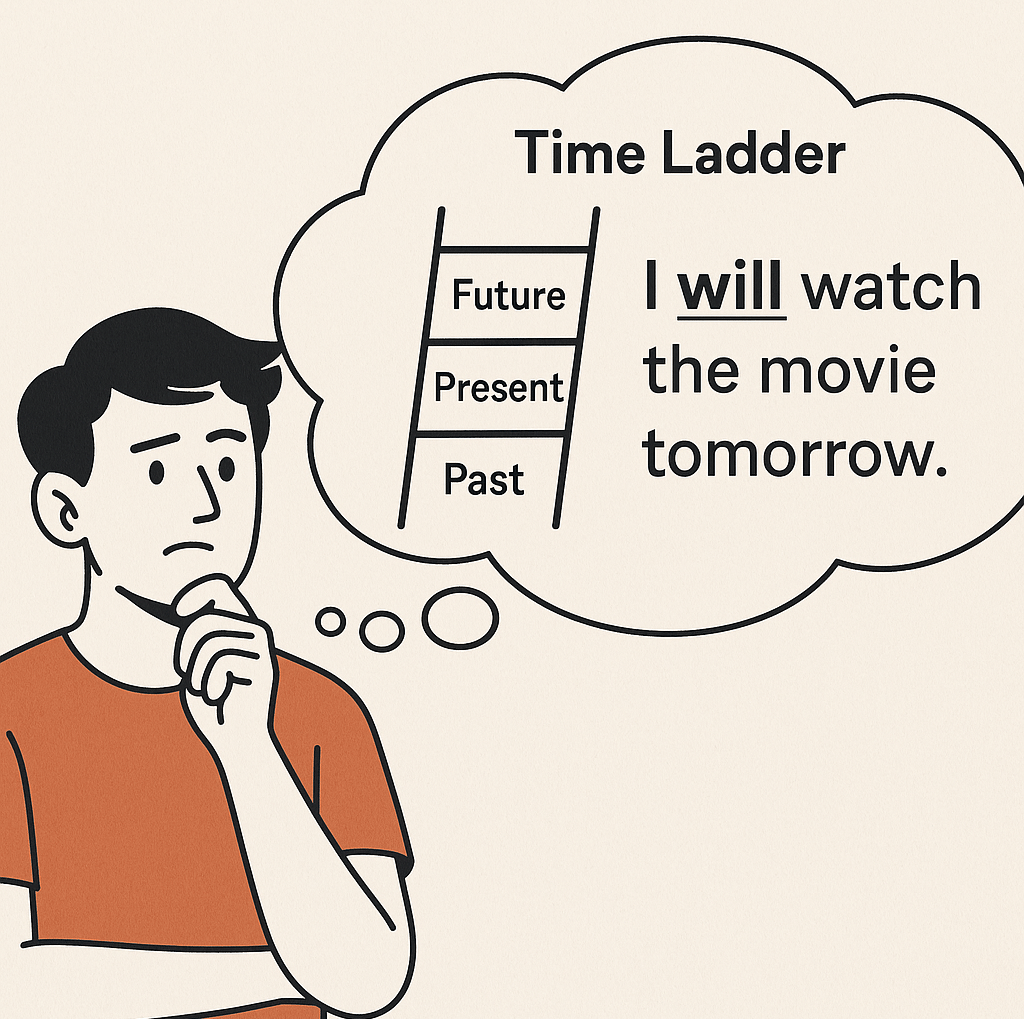Time Travel with Tenses
Time ladder is the way to go!
GIST English Masterclass
8/8/20252 min temps de lecture


Introduction
Tenses are the heartbeat of English grammar. They show when something happens: past, present, or future. Yet for many learners, switching between tenses feels confusing. Should I say I eat or I am eating? Do I use I went or I have gone? The key to mastering tenses is to see them as a journey through time. Once you connect the verb form with the timeline of the action, the puzzle becomes clearer.
Why Tenses Can Be Confusing
Learners struggle with tenses because there are many forms and each form expresses a slightly different meaning. The difficulty is not only about memorizing rules but about understanding the relationship between time and action.
Present tenses describe what is true now or what happens regularly.
Past tenses describe actions that already happened.
Future tenses describe actions that have not yet happened.
Perfect tenses connect one time to another, showing completion or continuity.
Without a clear timeline, learners often mix tenses or switch incorrectly.
A Simple Way to Switch Tenses: The Time Ladder
Think of tenses as a ladder of time. You move up or down the ladder depending on where the action belongs.
Step 1: Ask, “When did it happen?”
If it is happening now, use a present tense.
If it happened before now, use a past tense.
If it will happen after now, use a future tense.Step 2: Ask, “Is the action finished or still continuing?”
If finished, use a simple tense such as I walked.
If continuing, use a progressive tense such as I was walking.Step 3: Ask, “Do I need to connect two times?”
If yes, use a perfect tense such as I had walked before he arrived.
If no, stay with simple or progressive.
This ladder helps you climb through time logically.
How Learners Can Self-Learn Tenses
Draw Timelines
Visualize the action on a line from past to present to future. Mark whether it is finished or still happening.Practice Switching
Take a simple sentence like I eat breakfast. Then move it across the time ladder:Present: I eat breakfast at 8.
Past: I ate breakfast at 8.
Future: I will eat breakfast at 8.
Perfect: I have eaten breakfast already.
Progressive: I am eating breakfast now.
Notice Time Expressions
Words like yesterday, already, now, next week are strong signals for tense choice.Keep a Tense Diary
Write three daily sentences in past, present, and future. Example:Yesterday I studied.
Today I am studying.
Tomorrow I will study.
10 Advanced Tense Practice Questions
Copy the test below, answer it, then paste it back into ChatGPT with the prompt:
“Show the correct answers.”
Test: Choose the correct tense form.
By the time she arrived, we ___ (finish) dinner.
I usually ___ (go) for a walk in the evening, but today I ___ (stay) at home.
He ___ (study) English for three years before he moved to Canada.
Look! It ___ (rain) again.
They ___ (not see) each other since last summer.
I promise I ___ (call) you as soon as I get home.
While she ___ (cook), the children ___ (do) their homework.
This time next week, I ___ (fly) to New York.
If he ___ (work) harder, he would have passed the exam.
By 2030, scientists ___ (develop) more advanced renewable energy systems.
Conclusion
Tenses are not just rules, they are a way of traveling through time in language. If you learn to ask three simple questions—When did it happen, is it finished or continuing, do I need to connect two times—you can choose the right tense with confidence. With practice, the time ladder becomes second nature, and your English gains both accuracy and fluency.
